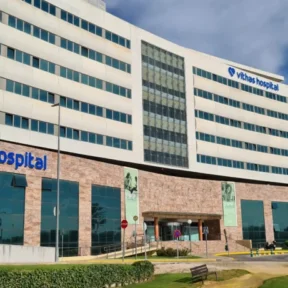What is hyperbaric medicine?
Hyperbaric medicine is a non-invasive medical treatment that involves administering oxygen in high concentrations within a pressurised medium, such as a hyperbaric chamber or low-pressure chamber.
Hyperbaric medicine is a medical speciality that uses pressure greater than local atmospheric pressure (> 1 bar = > 100kPa) to treat diseases or injuries within a hyperbaric chamber. This provides therapeutic benefits by inhaling gases such as O2 at pressures greater than one atmosphere.
HOT (Hyperbaric Oxygen Therapy) is a form of medical treatment that involves the intermittent administration of oxygen at high concentrations (100%) inside a hyperbaric chamber, at an ambient pressure that is greater than atmospheric pressure: “short-exposure, high-dose inhalation of O2, systemically released through the air and blood by breathing O2 intermittently inside a pressurised chamber.”
The hyperbaric chamber increases oxygen to 94% purity, increasing oxygen concentration in the blood plasma and achieving anti-inflammatory and regenerative effects. This is possible because the chamber is subjected to a higher pressure than the atmospheric one (between 1.45 and 1.48 atmospheres).
Hyperbaric medicine: Medical use of 100% pure oxygen in a pressurised chamber, also known as a hyperbaric chamber, at pressures of 1.4 to 3 ATA.
Hyperbaric oxygen therapy works in all tissues of the body in a systemic way and offers benefits for treating all types of conditions.
Which patients is it for?
It is generally recommended for older people to help recover joint and muscle mobility and improve circulatory deficiencies. It is especially aimed at patients with severe vascular conditions.
Main conditions and disease
- Clinical ailments: chronic fatigue and fibromyalgia, tinnitus, migraines and headaches, dizziness and vertigo, sleep apnoea, altitude sickness.
- Traumatic injuries: post-surgical injury and recovery, arthritis, osteoarthritis, muscle aches.
- Cancer patients: post-radiation therapy injuries.
- Wounds and scars: burns, grafts, ulcers and vasculitis, diabetic foot treatment and injuries in people with diabetes, wound healing (post-surgical, accidents, etc.).
- Sports and occupational medicine: speeds up muscle, tendon and ligament recovery, wounds, bruises, sprains, acclimatisation and prevention of occupational injuries.
Main treatments
Due to its therapeutic physiological effects, hyperbaric oxygenation treatment is recommended for conditions that involve pain and inflammation. Its main benefits include speeding up rehabilitation times and promoting wound heeling.
As for pain treatment, hyperbaric medicine decreases acute and chronic inflammation, stimulates regeneration of injured tissues, relieves neuropathic pain and helps fight infections.
In wounds, it accelerates healing, reduces inflammation and pain, is bactericidal and controls infections. It also shortens recovery times and increases the chances of a successful treatment outcome.
In the area of rehabilitation, it acts on neurological functions, deflates the tissues of the nervous system and accelerates motor rehabilitation. It also improves sensory function and helps recover memory and intellect.
Special services
The Hyperbaric Medicine Unit has state-of-the-art chambers and offers fully personalised treatments for each patient under medical supervision. In the first visit, your doctor will establish the specific guidelines to follow in your case:
- Recommended number of sessions (may range from 5 to 30, depending on each case)
- Frequency of sessions (the usual average is 3 sessions per week)
- Length of sessions (either 60 or 90 minutes)
Why come to our clinic?
Hyperbaric medicine offers a highly personalised service with multiple benefits, including:
- Vasoconstriction: decreases oedema, achieving an anti-inflammatory effect.
- Neovascularisation or angiogenesis: stimulates new blood vessel production, accelerates healing, tissue repair and recovery.
- Reduced oxidative stress: hypoxia generates free radicals, while hyperoxia (increase of oxygen in the blood) regulates free radical formation.
- Fibroblastic stimulation: increases collagen synthesis to heal and repair wounds and tissues.
- Stem cell stimulation: participates in the formation of new blood vessels and tissue.
- Neurotransmitter regulation: acts directly on neurotransmitter secretion and regulation.
- Increased cellular immunological activity: stimulates the bactericidal action of white blood cells.
FAQs
Is the hyperbaric chamber session uncomfortable?
The chamber session can take between 60 and 90 minutes depending on the medical prescription. Some people may feel their ears pop during the first minutes of the session (pressurisation) and in the last few minutes (depressurisation), similar to what you feel during air travel. This feeling will go away when you do the manoeuvres indicated by the health staff.
When will I begin to notice the effects of the treatment?
Benefits are achieved from the first session. It is normal to not feel any obvious changes at first. Some patients may quickly notice that they’re resting better and wake up with more energy. Depending on the condition, you’ll begin to notice an improvement from session twelve to fifteen approximately.





